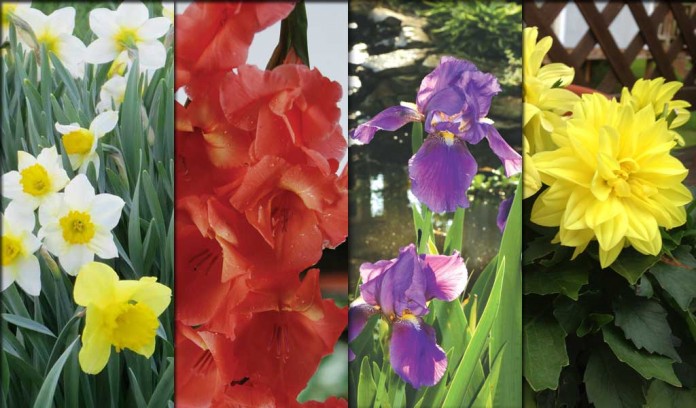Did you know that there is more than one type of flower bulb? There are four, actually: true bulbs, corms, rhizomes and tubers.
All bulbs serve as energy storage containers that feed plants during dormant periods as well as during the flowering season, according to Penn State University Extension.
True bulbs
University of Illinois Extension explains that true bulbs are considered to be an entire plant. They consist of five parts:
- The basal plate, from which roots grow
- Fleshy scales that are the primary storage
- Tunic, which protects the fleshy scales
- Shoot, which includes the developing flower and leaves
- Lateral buds, which develop into bulblets or offsets
Related: How to plant bulbs this fall
Stems form from the base of the bulb. Bulbs survive from year to year, and small bulbs (“offsets”) form on the original bulb to produce new plants.
There are two types of true bulbs: tunicate and imbricate.
Tunicate bulbs have the tunic, or paper-like covering that protects the fleshy scales.
Examples of true bulbs: alliums, daffodils, hyacinths, tulips
Imbricate bulbs do not have the tunic. Imbricate bulbs can dry out easily since they do not have the protective tunic over the scales, so they must be kept moist before they’re planted.
Example of imbricate bulb: lily
Corms
Corms look like short, squat stems, which are filled with food storage tissue. Corms have a basal plate, which is where the roots develop. The other characteristics of corms are a protective tunic and a growing point.
Similar to true bulbs, some corms may produce small plants (called “cormlets”), which can be taken from the parent and planted separately to grow new plants, according to Penn State Extension.
University of Illinois Extension explains that you can tell the difference between true bulbs and corms because when sliced open in half, corms do not have the visible storage rings like true bulbs.
Examples of corms: crocus, freesia, gladiolus
Rhizomes
Rhizomes grow along the soil’s surface. Growth buds form on the original rhizome for the following year’s foliage and flowers. The original rhizome only produces flowers once.
The lily-of-the-valley rhizome produces pips, which turn into new plants that can be dug up once they have developed roots and then replanted, University of Illinois Extension explains.
Examples of rhizomes: canna lilies, irises, lily-of-the-valley
Tubers
Tubers are underground roots. They have fleshy, food storage parts.
Tubers are unlike true bulbs and corms because they lack protective tunics and basal plates from which roots grow.
The caladium tuber, for instance, has buds all over the tuber. Roots develop from these buds and new plants form, according to University of Illinois Extension.
Examples of tubers: caladiums, certain begonias, dahlias, oxalis, anemones, potatoes










